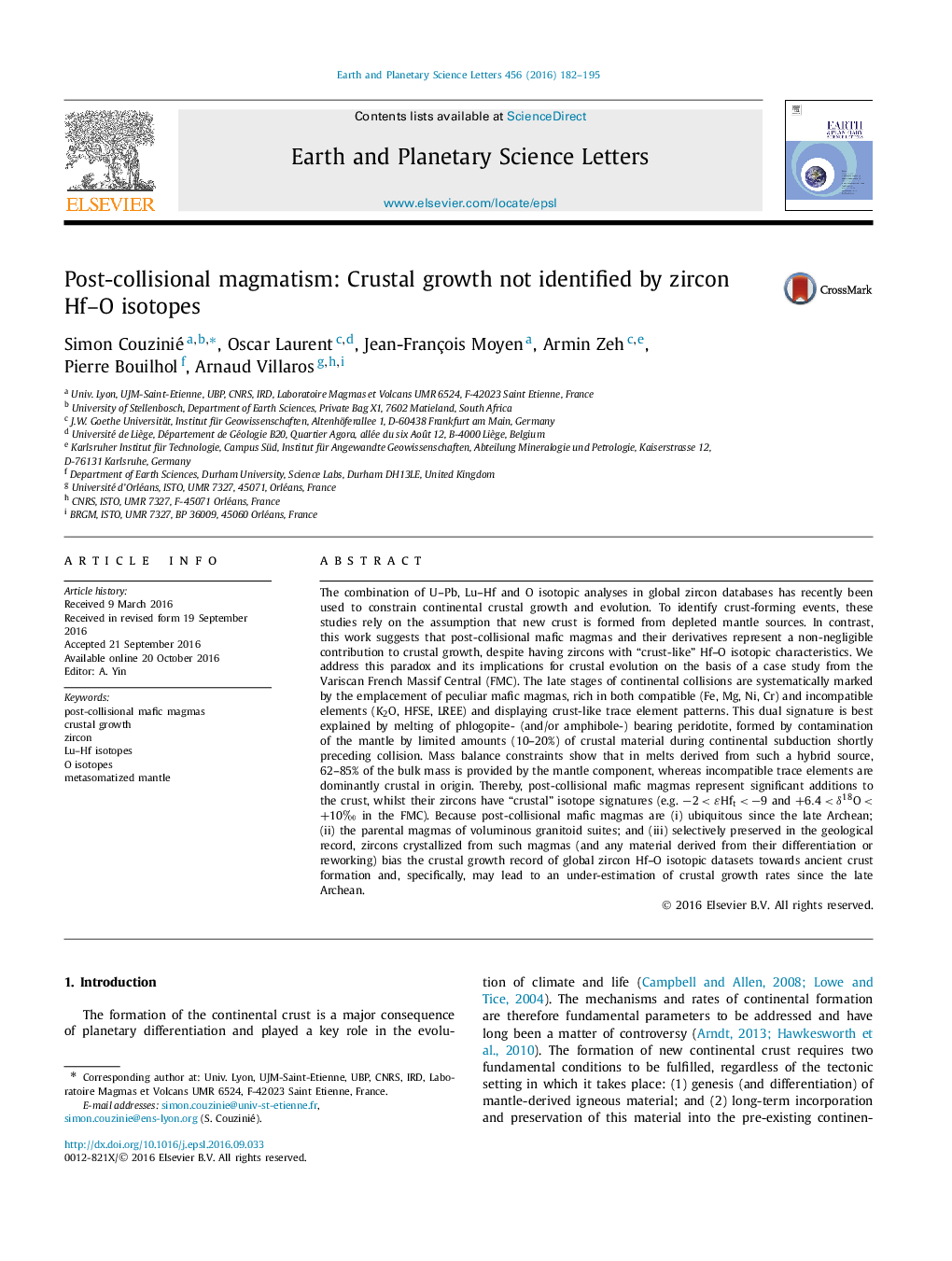| کد مقاله | کد نشریه | سال انتشار | مقاله انگلیسی | نسخه تمام متن |
|---|---|---|---|---|
| 6427086 | 1634700 | 2016 | 14 صفحه PDF | دانلود رایگان |

- Post-collisional mafic magmas (PCMM) are ubiquitous since the late Archean.
- The source of PCMM is a mantle contaminated by 10 to 20% crustal materials.
- Around three quarters of the PCMM bulk mass originates from the mantle.
- Voluminous magmatic suites derive from PCMM.
- Post-collisional magmatism contributes to crustal growth.
The combination of U-Pb, Lu-Hf and O isotopic analyses in global zircon databases has recently been used to constrain continental crustal growth and evolution. To identify crust-forming events, these studies rely on the assumption that new crust is formed from depleted mantle sources. In contrast, this work suggests that post-collisional mafic magmas and their derivatives represent a non-negligible contribution to crustal growth, despite having zircons with “crust-like” Hf-O isotopic characteristics. We address this paradox and its implications for crustal evolution on the basis of a case study from the Variscan French Massif Central (FMC). The late stages of continental collisions are systematically marked by the emplacement of peculiar mafic magmas, rich in both compatible (Fe, Mg, Ni, Cr) and incompatible elements (K2O, HFSE, LREE) and displaying crust-like trace element patterns. This dual signature is best explained by melting of phlogopite- (and/or amphibole-) bearing peridotite, formed by contamination of the mantle by limited amounts (10-20%) of crustal material during continental subduction shortly preceding collision. Mass balance constraints show that in melts derived from such a hybrid source, 62-85% of the bulk mass is provided by the mantle component, whereas incompatible trace elements are dominantly crustal in origin. Thereby, post-collisional mafic magmas represent significant additions to the crust, whilst their zircons have “crustal” isotope signatures (e.g. â2<εHft<â9 and +6.4<δO18<+10â° in the FMC). Because post-collisional mafic magmas are (i) ubiquitous since the late Archean; (ii) the parental magmas of voluminous granitoid suites; and (iii) selectively preserved in the geological record, zircons crystallized from such magmas (and any material derived from their differentiation or reworking) bias the crustal growth record of global zircon Hf-O isotopic datasets towards ancient crust formation and, specifically, may lead to an under-estimation of crustal growth rates since the late Archean.
Journal: Earth and Planetary Science Letters - Volume 456, 15 December 2016, Pages 182-195